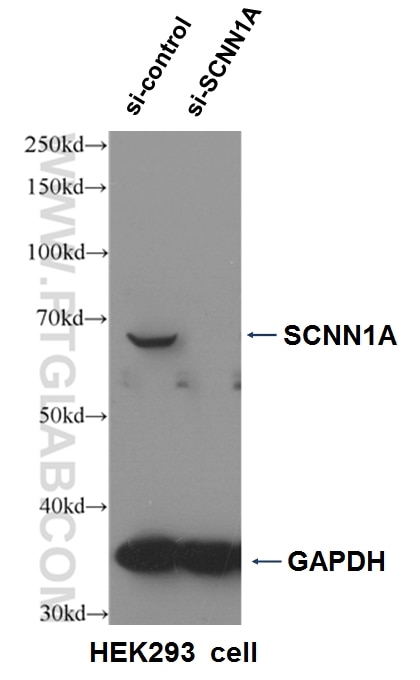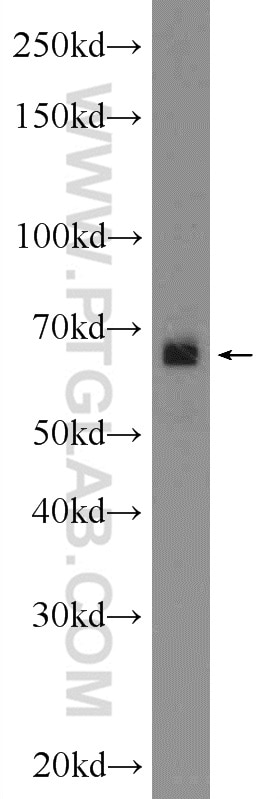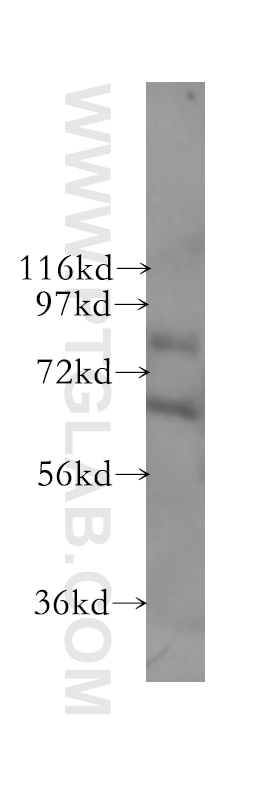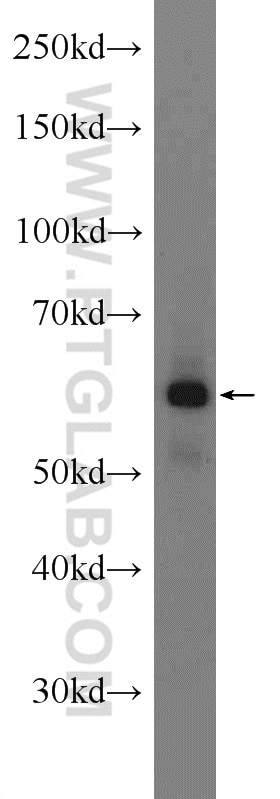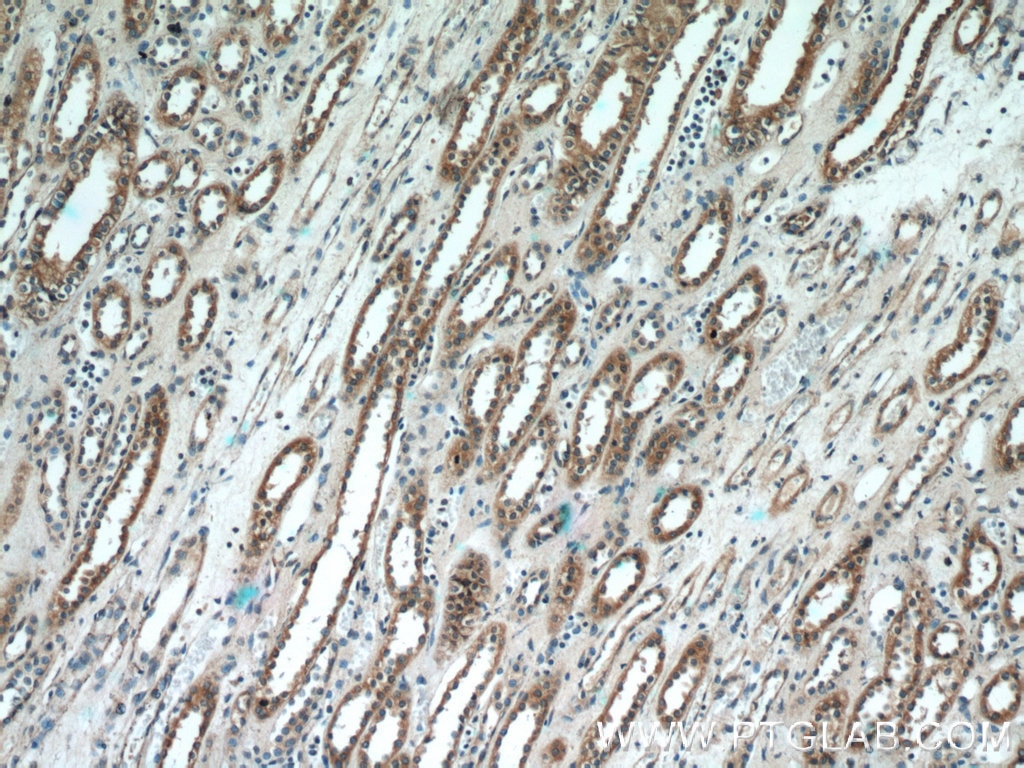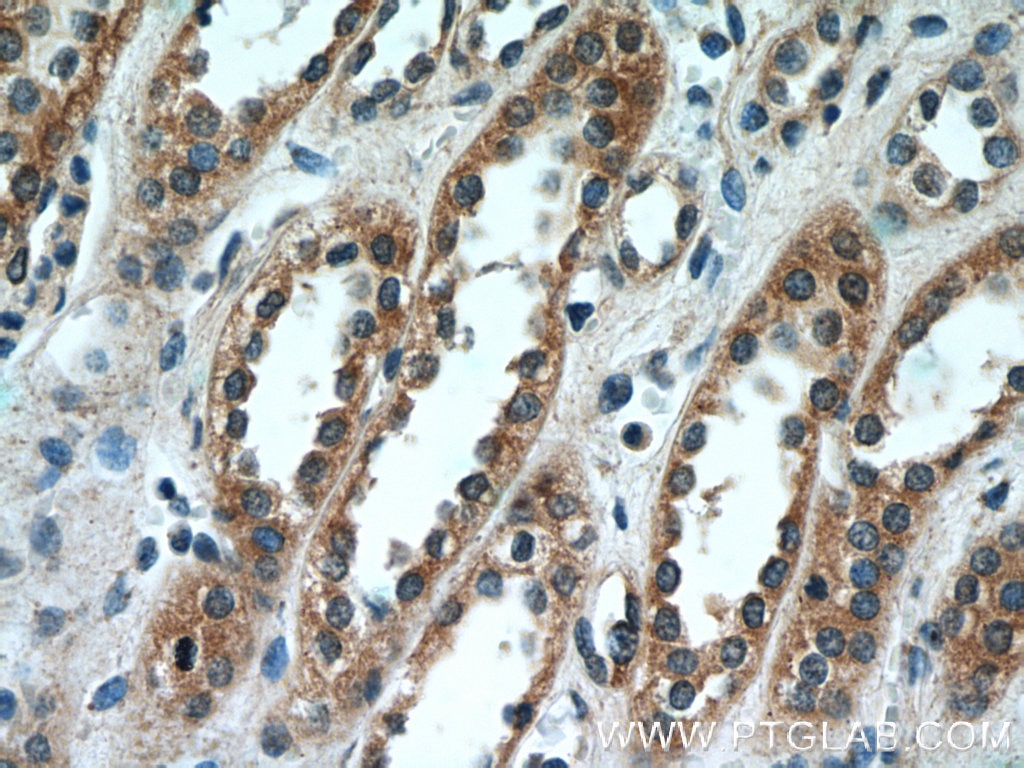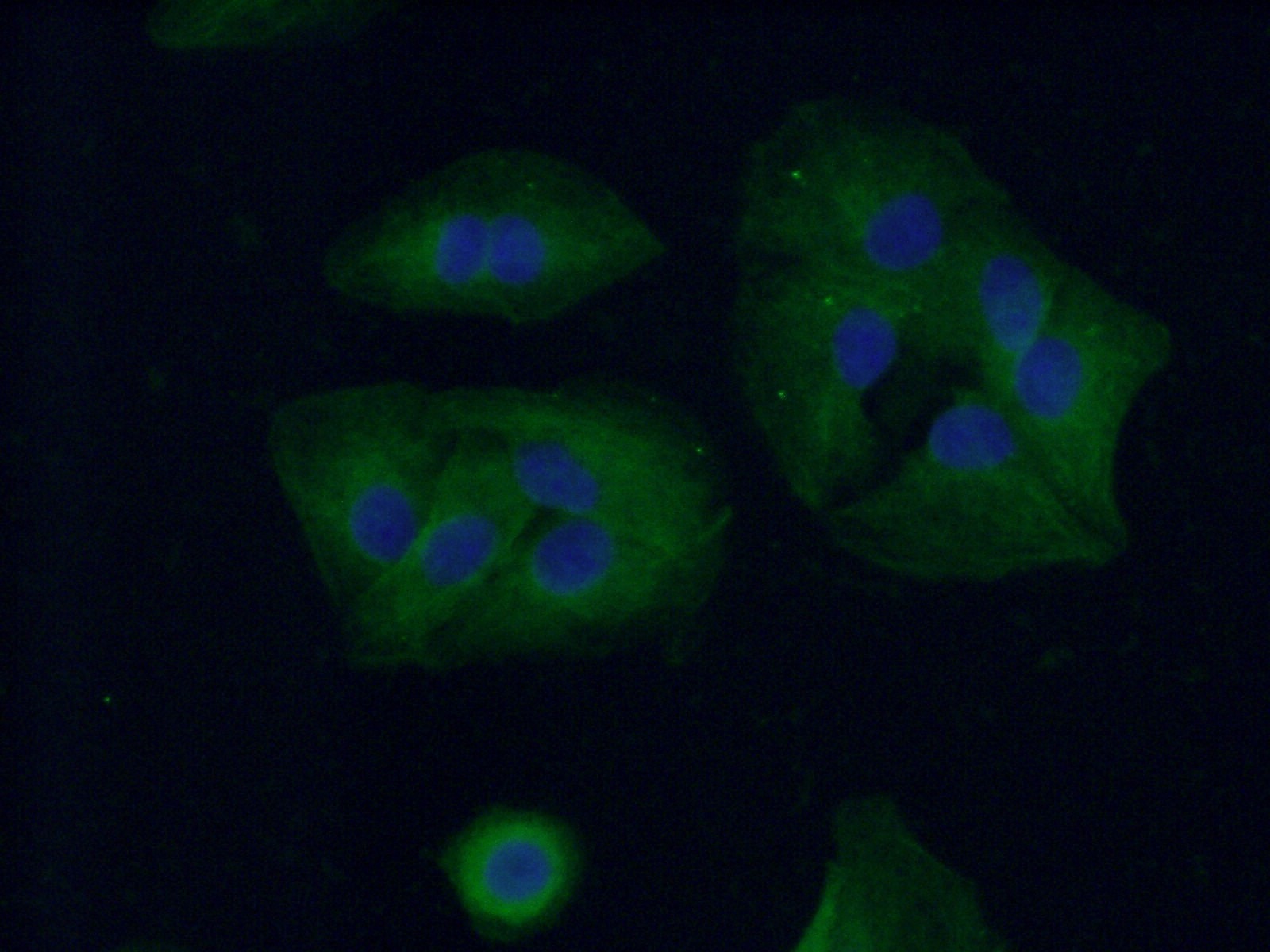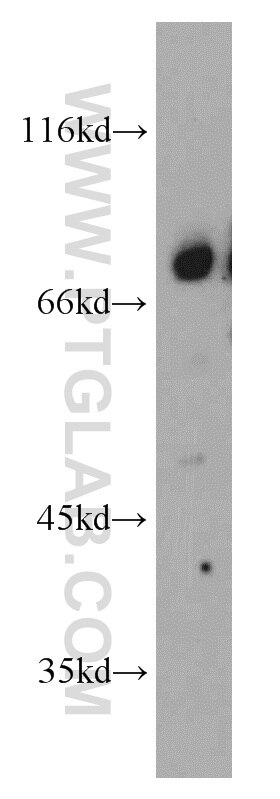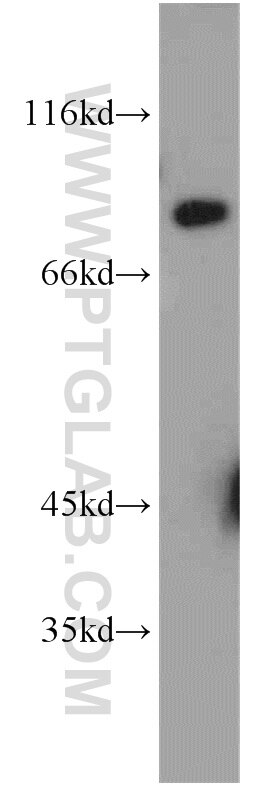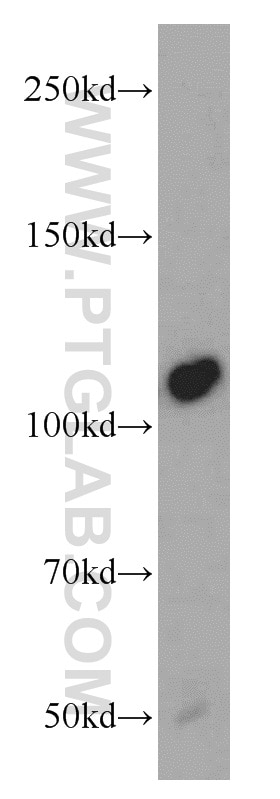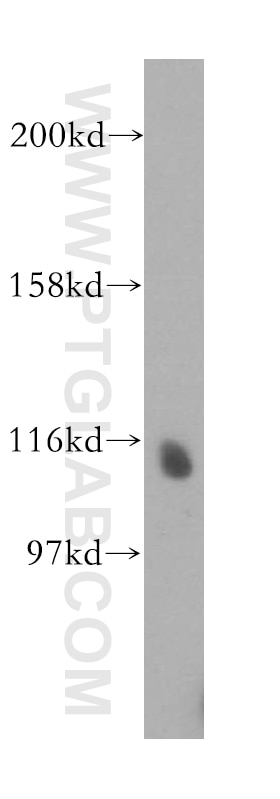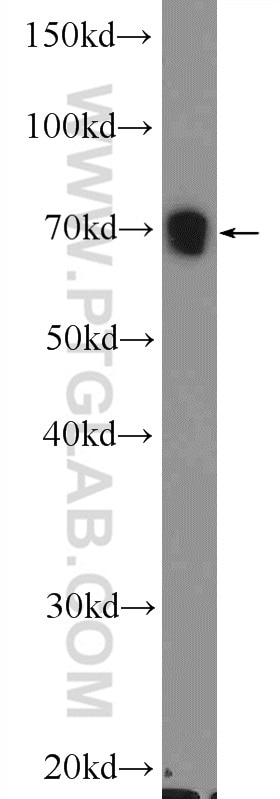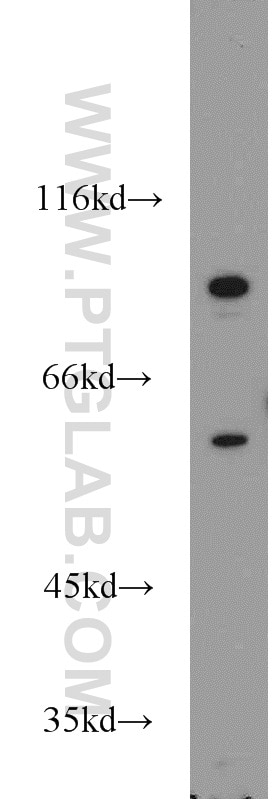- Phare
- Validé par KD/KO
Anticorps Polyclonal de lapin anti-SCNN1A
SCNN1A Polyclonal Antibody for WB, IF, IHC, ELISA
Hôte / Isotype
Lapin / IgG
Réactivité testée
Humain, rat, souris
Applications
WB, IF, IHC, ELISA
Conjugaison
Non conjugué
N° de cat : 10924-2-AP
Synonymes
Galerie de données de validation
Applications testées
| Résultats positifs en WB | cellules PC-13, HEK-293 |
| Résultats positifs en IHC | tissu rénal humain il est suggéré de démasquer l'antigène avec un tampon de TE buffer pH 9.0; (*) À défaut, 'le démasquage de l'antigène peut être 'effectué avec un tampon citrate pH 6,0. |
| Résultats positifs en IF/ICC | cellules A549 |
Dilution recommandée
| Application | Dilution |
|---|---|
| Western Blot (WB) | WB : 1:500-1:1000 |
| Immunohistochimie (IHC) | IHC : 1:20-1:200 |
| Immunofluorescence (IF)/ICC | IF/ICC : 1:50-1:500 |
| It is recommended that this reagent should be titrated in each testing system to obtain optimal results. | |
| Sample-dependent, check data in validation data gallery | |
Applications publiées
| KD/KO | See 1 publications below |
| WB | See 10 publications below |
| IHC | See 7 publications below |
Informations sur le produit
10924-2-AP cible SCNN1A dans les applications de WB, IF, IHC, ELISA et montre une réactivité avec des échantillons Humain, rat, souris
| Réactivité | Humain, rat, souris |
| Réactivité citée | rat, Humain, souris |
| Hôte / Isotype | Lapin / IgG |
| Clonalité | Polyclonal |
| Type | Anticorps |
| Immunogène | SCNN1A Protéine recombinante Ag1325 |
| Nom complet | sodium channel, nonvoltage-gated 1 alpha |
| Masse moléculaire calculée | 76 kDa |
| Poids moléculaire observé | 60-70 kDa |
| Numéro d’acquisition GenBank | BC006526 |
| Symbole du gène | SCNN1A |
| Identification du gène (NCBI) | 6337 |
| Conjugaison | Non conjugué |
| Forme | Liquide |
| Méthode de purification | Purification par affinité contre l'antigène |
| Tampon de stockage | PBS avec azoture de sodium à 0,02 % et glycérol à 50 % pH 7,3 |
| Conditions de stockage | Stocker à -20°C. Stable pendant un an après l'expédition. L'aliquotage n'est pas nécessaire pour le stockage à -20oC Les 20ul contiennent 0,1% de BSA. |
Informations générales
SCNN1A (sodium channel, non-voltage-gated 1 alpha), also known as ENaCA (epithelial Na(+) channel subunit alpha) or amiloride-sensitive sodium channel subunit alpha, is the alpha subunit of the epithelial Na(+) channel (ENaC). ENaC is expressed in the apical membrane of salt-absorbing epithelia of kidney, distal colon, and lung. ENaC is a non-voltage gated, constitutively active channel highly selective for sodium. It has an essential role in salt and fluid homeostasis across epithelial tissues. ENaC consists of three different subunits: alpha, beta, gamma. Mutations in the gene of SCNN1A have been associated with pseudohypoaldosteronism type 1 (PHA1), a rare salt wasting disease resulting from target organ unresponsiveness to mineralocorticoids. Alternatively spliced transcript variants encoding different isoforms have been described for this gene. It has been reported that full-length SCNN1A protein can be cleaved into 65- and 30-kDa fragments (PMID: 16477034; 18701608).
Protocole
| Product Specific Protocols | |
|---|---|
| WB protocol for SCNN1A antibody 10924-2-AP | Download protocol |
| IHC protocol for SCNN1A antibody 10924-2-AP | Download protocol |
| IF protocol for SCNN1A antibody 10924-2-AP | Download protocol |
| Standard Protocols | |
|---|---|
| Click here to view our Standard Protocols |
Publications
| Species | Application | Title |
|---|---|---|
Am J Respir Crit Care Med SPX-101 is a Novel ENaC-targeted Therapeutic for Cystic Fibrosis that Restores Mucus Transport. | ||
Hypertension Renal Natriuretic Peptide Receptor-C Deficiency Attenuates NaCl Cotransporter Activity in Angiotensin II-Induced Hypertension. | ||
Sci Rep Distribution of aquaporins and sodium transporters in the gastrointestinal tract of a desert hare, Lepus yarkandensis. | ||
PLoS One Reduced Expression of Enac in Placenta Tissues of Patients with Severe Preeclampsia Is Related to Compromised Trophoblastic Cell Migration and Invasion during Pregnancy. |
